Introduction
For business owners navigating a competitive environment, understanding copyright is crucial. Copyright law safeguards the original creations that can define and differentiate your brand—from written content and designs to software and marketing materials. Gaining clear knowledge about copyright’s definition and legal scope, eligibility requirements, and the nuances of infringement helps protect your innovations and investments. This article delves into fundamental facts about copyright, clarifies what qualifies for protection, highlights common enforcement challenges, compares copyright with other intellectual property rights, and lays out the specific rights and limits attributed to creators. Each chapter builds a comprehensive understanding tailored to empower business decisions around protecting and leveraging creative assets effectively.
Tables of Contents
Chapter 1: Fundamental Facts About Copyright: Definition and Legal Scope
- Exclusive Legal Rights and Protections Granted by Copyright
- Exploring the Range of Original Works Protected by Copyright Law
- Understanding Copyright Duration: How Long Protection Lasts and What It Means
- Balancing Economic Incentives and Moral Rights: The Core Purpose of Copyright Law
- Automatic Copyright Protection Explained: Why Registration Matters in Enforcing Creative Rights
Chapter 2: Key Facts About Copyright Eligibility and Originality Requirements
- Defining Originality and Fixation: The Cornerstones of Copyright Protection
- Understanding What Copyright Protects: The Boundaries of Originality and Non-Copyrightable Material
- Understanding Copyright Eligibility: The Crucial Role and Benefits of Registration
- Understanding Originality and Independent Creation: Foundations of Copyright Eligibility
- Understanding Copyright’s Boundaries: Protecting Creative Expression While Excluding Mere Facts and Ideas
Chapter 3: Navigating Copyright Infringement and Enforcement in the Digital Age
- Harnessing AI and Decentralized Technologies in Copyright Enforcement Challenges
- Weighing Financial Risks: Statutory Damages, Litigation Burdens, and AI’s Impact on Copyright Enforcement
- Cross-Border Legal Dynamics and Platform Enforcement in Copyright Protection
- The Ripple Effect of Copyright Trolls: How Aggressive Enforcement Challenges Business and Creativity
- Navigating Fair Use and AI Training: Emerging Judicial Perspectives on Copyright Enforcement
Chapter 4: Distinct Facts About Copyright Versus Other Intellectual Property Rights
- Understanding How Copyright, Patents, and Trademarks Protect Different Creations and Innovations
- Contrasting Copyright, Patent, and Trademark Protections: Durations and Registration Essentials
- Economic Impact and Market Functions: How Copyright Stands Apart from Patents, Trademarks, and Trade Secrets
- Creative Expression Versus Innovation: How Copyright Diverges from Patents and Trademarks
- How Copyright and Other Intellectual Property Shapes Societies and Global Relations
Chapter 5: Essential Facts About Copyright Creators’ Rights and Limitations
- How Automatic Copyright Grants Creators Control and Economic Benefits
- Understanding Originality and the Boundaries of Copyright Protection
- Moral Rights: Protecting Creators’ Personal Connection Beyond Economic Control
- Balancing Creators’ Rights with Fair Use: Navigating Copyright Exceptions
- Balancing Creator Control and Public Access: Copyright Duration and Legal Boundaries
Chapter 1: Fundamental Facts About Copyright: Definition and Legal Scope
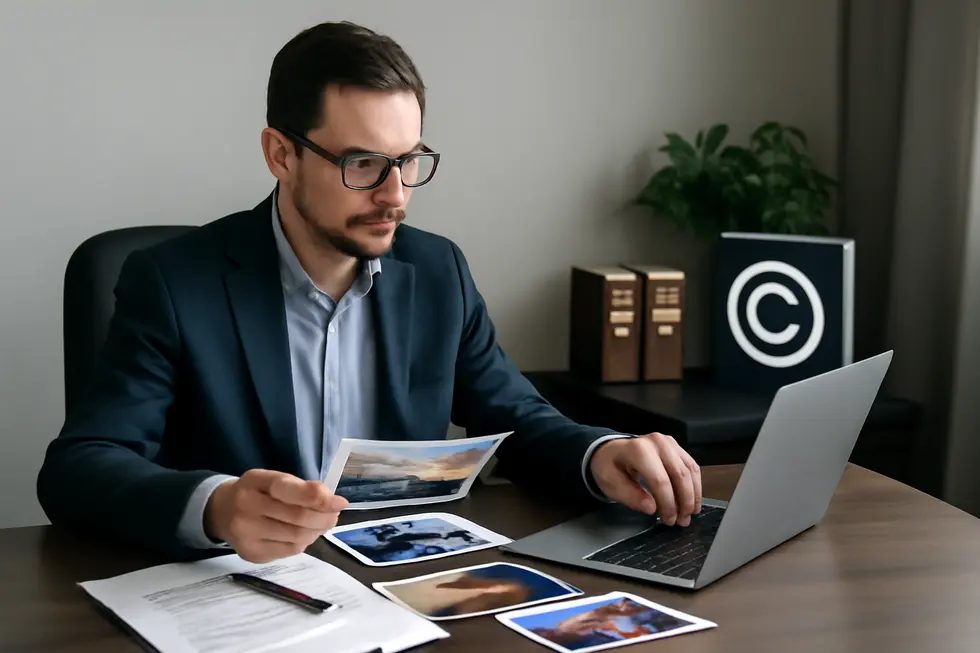
1. Exclusive Legal Rights and Protections Granted by Copyright
Copyright grants creators exclusive legal rights that protect their original works once fixed in a tangible medium. These rights include reproducing the work, distributing copies, publicly performing or displaying the work, and creating derivative works. Such protections empower authors, artists, musicians, and software developers to control how their creations are used and to benefit financially. Copyright protection arises automatically without formal registration, lasting for the author’s life plus 70 years in the U.S., after which works enter the public domain. The law balances economic interests with moral rights, safeguarding both commercial use and the creator’s personal connection to their work. This system encourages innovation by rewarding creativity while eventually allowing public access. For further details, see what is copyright.
2. Exploring the Range of Original Works Protected by Copyright Law
Copyright protection extends to a wide variety of original works fixed in tangible forms, granting creators exclusive control over their expressions. These protected categories include literary creations such as novels and articles; musical compositions and sound recordings; dramatic pieces like plays and choreographed performances; artistic works including paintings and photographs; audiovisual content like films and web videos; and computer software or applications. To qualify, a work must be independently created with minimal creativity and embedded in a tangible medium. Copyright holders receive rights to reproduce, distribute, publicly perform or display, and adapt their work. This broad scope encourages diverse creative output by securing legal recognition and economic benefits. For further insights into how copyright applies within business contexts, see copyright information for books. For a comprehensive overview, consult the University of Michigan’s Copyright Basics FAQ external resource.
3. Understanding Copyright Duration: How Long Protection Lasts and What It Means
Copyright duration typically extends for the life of the creator plus 70 years, a timeframe designed to balance creators’ rights with public access. This prolonged term grants authors and their heirs exclusive control over reproductions, adaptations, and public uses of the work, allowing financial and moral benefits for decades. Once the term expires, the work enters the public domain, enabling unrestricted use. This limited monopoly incentivizes creation while ensuring culture eventually becomes freely accessible. Notably, only the expression fixed in tangible form is protected, not the ideas or facts behind it. This system underpins copyright’s role in fueling innovation and cultural growth. For more details on public use after protection ends, visit copyright law and the public domain.
4. Balancing Economic Incentives and Moral Rights: The Core Purpose of Copyright Law
Copyright grants creators exclusive control over their original works fixed in tangible form, securing economic benefits by allowing commercial use and licensing. This protection motivates ongoing creativity by ensuring authors profit financially from their efforts. Beyond monetary interests, copyright safeguards moral rights—such as attribution and protection against harmful alterations—which uphold the creator’s personal and reputational connections to their work. The law requires originality and fixation to qualify, offering rights to reproduce, distribute, perform, and adapt works for the author’s lifetime plus seventy years. This dual focus encourages innovation while honoring the creator’s personal bond with their creation. For a deeper understanding, explore copyright definition economics for business.
5. Automatic Copyright Protection Explained: Why Registration Matters in Enforcing Creative Rights
Copyright protection arises the moment an original work is fixed in a tangible medium, requiring no formal registration or notice. This automatic safeguard grants creators exclusive rights over their works immediately upon creation, whether written, recorded, or otherwise embodied. However, while registration is not mandatory to establish copyright, it plays a pivotal role in legal enforcement. Registered works allow owners to pursue infringement claims federally and access statutory damages and attorney fees, strengthening their position in disputes. Ownership generally vests in the creator, except in employer-commissioned works, and confers rights to reproduce, distribute, perform, display, and adapt the work. This balance between automatic protection and optional registration ensures creators maintain control while enabling legal remedies when infringed. For a deeper dive into these foundational principles, visit this copyright definition and economics guide. Additional insights are available at: https://patentpc.com/blog/is-software-protected-by-copyright-or-patent
Chapter 2: Key Facts About Copyright Eligibility and Originality Requirements
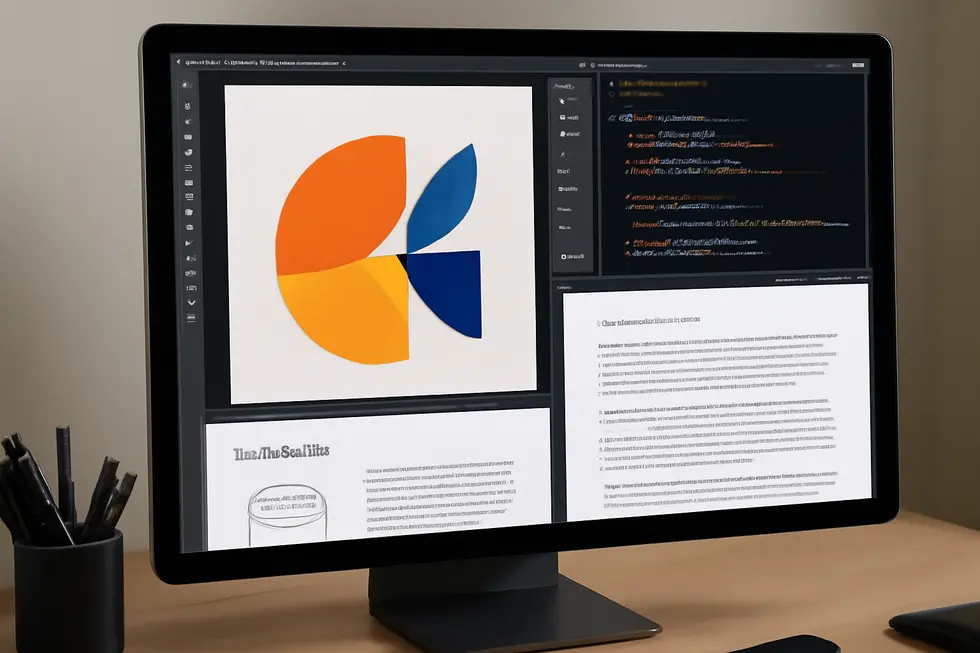
1. Defining Originality and Fixation: The Cornerstones of Copyright Protection
Copyright protection hinges on two fundamental criteria: originality and fixation. Originality requires that a work be independently created by the author with at least a minimal amount of creativity, even a slight creative spark, as established by Feist v. Rural. Mere factual data or simple listings lack this threshold. Fixation demands the work be captured in a tangible medium—whether written, recorded, or digitally stored—allowing it to be perceived or reproduced beyond a fleeting moment. While registration is not mandatory for protection, fixed original works are automatically covered under U.S. law. This balance ensures that copyright safeguards the unique expression rather than ideas themselves, encouraging creative endeavors. For a deeper legal understanding, the University of Michigan Library’s copyright basics guide offers thorough insights.
2. Understanding What Copyright Protects: The Boundaries of Originality and Non-Copyrightable Material
Copyright protection hinges on originality and fixation in a tangible form, meaning a work must be independently created and physically or digitally captured. However, this protection excludes facts, ideas, methods, natural phenomena, and works without human authorship, such as creations by animals. Only the unique expression of ideas qualifies, not the ideas themselves. For instance, software code authored by humans receives protection, but underlying algorithms do not. Similarly, simple social dances or recipes as mere ingredient lists lack sufficient originality. Copyright arises automatically without registration, which is only necessary to sue, and lasts typically for the author’s life plus 70 years. This balance restricts protection to creative expression, fostering innovation while preserving public access to facts and ideas. For further details on public domain and non-copyrightable works, see this copyright and public domain resource.
3. Understanding Copyright Eligibility: The Crucial Role and Benefits of Registration
Copyright protection requires originality and fixation in a tangible medium, but registration enhances legal strength. While copyright automatically attaches once a work is fixed and independently created with minimal creativity, registration is not mandatory. However, registering a work establishes a public record of ownership, crucially enabling creators to sue for infringement and claim statutory damages and attorney’s fees—options unavailable without registration. The process involves submitting an application, a copy of the work, and a filing fee. Notably, purely functional features and common ideas remain unprotected unless they bear creative expression. Registration thus provides practical enforcement advantages and stronger legal remedies, ensuring creators effectively safeguard their original works over time. For more detailed insights on this process, see copyright language for business owners. Learn more about copyright registration.
4. Understanding Originality and Independent Creation: Foundations of Copyright Eligibility
Understanding Originality and Independent Creation: Foundations of Copyright Eligibility
Copyright protection hinges on originality and independent creation, which require a work to embody at least minimal creativity fashioned by its author without copying. This minimal creativity standard is intentionally low, excluding mere facts, common phrases, or simple listings from protection unless creatively arranged or expressed. The law safeguards the fixed expression of ideas rather than the ideas or facts themselves, balancing creators’ rights with public access. Ownership generally rests with the creator unless assigned otherwise, and contemporary challenges like AI-generated content test these originality boundaries. For a comprehensive guide on these principles, see the University of Michigan Library’s copyright basics.
This foundation ensures copyright encourages innovation by protecting unique human expressions fixed in tangible form, while facts and ideas remain freely available.
5. Understanding Copyright’s Boundaries: Protecting Creative Expression While Excluding Mere Facts and Ideas
Copyright protects original works fixed in a tangible form, requiring the work to be independently created and to contain at least minimal creativity. It safeguards the way ideas are expressed, not the facts or ideas themselves, since facts lack originality and belong to the public domain. Although simple compilations of facts are not protected, a creative selection, coordination, or arrangement may qualify for copyright if it demonstrates originality. This balance ensures creators retain control over their unique expressions while maintaining free access to information. Copyright automatically arises upon fixation and generally lasts the author’s life plus 70 years. For further details on how originality defines copyright eligibility, see this resource.
Chapter 3: Navigating Copyright Infringement and Enforcement in the Digital Age
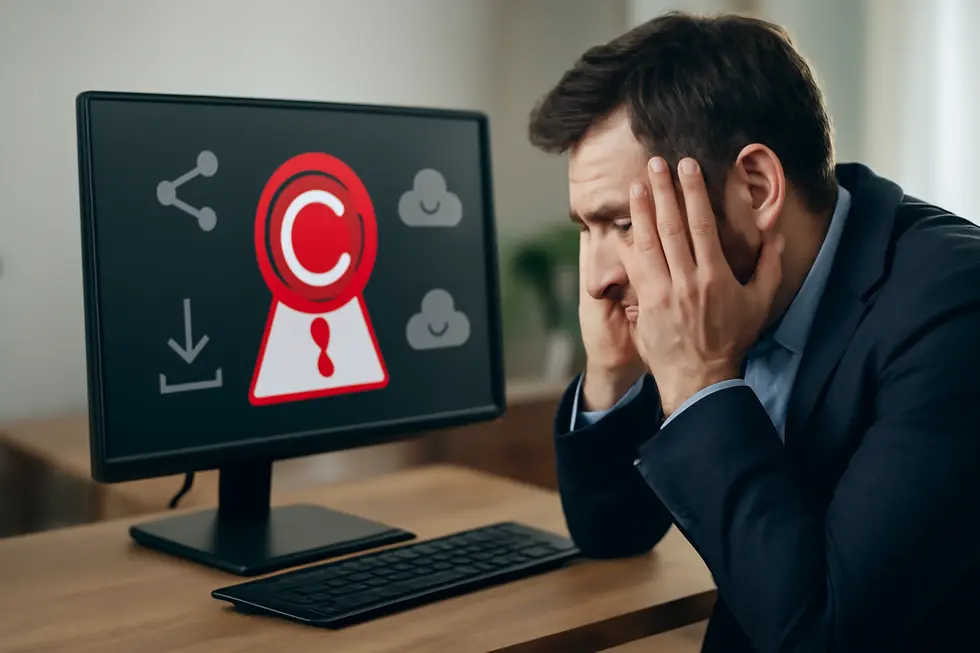
1. Harnessing AI and Decentralized Technologies in Copyright Enforcement Challenges
Advancements in artificial intelligence (AI) and decentralized platforms are reshaping copyright infringement detection and enforcement. AI streamlines monitoring by rapidly scanning vast digital content, automatically flagging potential infringements and assisting rights holders with real-time risk management. This automation extends to enforcement, expediting takedown requests and compiling data to support legal actions. However, AI raises governance challenges surrounding transparency, fairness, and regulatory consistency. Simultaneously, decentralized systems leverage blockchain and smart contracts to embed enforcement rules in code, enabling community-driven moderation without centralized control. These technologies complicate licensing, especially for AI-generated works that may include copyrighted materials, necessitating rigorous oversight and risk mitigation. Overall, this technological shift demands new legal and ethical frameworks to effectively balance innovation, protection, and access within copyright law. For further insights into copyright law nuances, see copyright information for books. [1]
2. Weighing Financial Risks: Statutory Damages, Litigation Burdens, and AI’s Impact on Copyright Enforcement
Copyright infringement carries heavy financial consequences, primarily through statutory damages ranging from $750 to $150,000 per work, depending on intent. These damages do not require proof of actual harm if registration criteria are met, making penalties potentially disproportionate to real losses. The cost of litigation, often tens of thousands in legal fees, further intensifies the burden on accused parties, who seldom recover attorney fees unless claims are frivolous. Emerging issues involve AI, where unauthorized use of copyrighted datasets risks steep statutory damages and uncertain liabilities around AI-generated content. Notably, some AI companies absorb infringement settlements as routine expenses, shifting enforcement costs to rights holders and challenging traditional content valuation. To mitigate such risks, intellectual property insurance has become an essential tool for creators and businesses alike. This complex financial dynamic underscores crucial enforcement challenges within copyright law. For more detailed insights, visit copyright definition economics for business.
3. Cross-Border Legal Dynamics and Platform Enforcement in Copyright Protection
Copyright enforcement is complicated by the territory-based nature of laws, where rights granted in one country may not automatically apply elsewhere. International agreements like the Berne Convention offer a foundation for mutual recognition, but differing national laws, durations, and protections still pose hurdles. Online platforms, while global, enforce copyright through their own policies and the jurisdiction they reside in, causing uneven application and frequent need for repeated enforcement actions. Resolving disputes often involves costly litigation or arbitration with jurisdictional disputes at the forefront. To protect works effectively, creators and rights holders must proactively monitor use across diverse platforms and borders, leveraging customs interventions and platform complaint mechanisms. Such multi-jurisdictional strategies are essential to address infringement in the interconnected digital environment. For further understanding, explore copyright law and the public domain. An in-depth resource on international copyright enforcement is available through the University of Pennsylvania’s copyright international resources.
4. The Ripple Effect of Copyright Trolls: How Aggressive Enforcement Challenges Business and Creativity
Copyright trolls deploy aggressive mass enforcement tactics by leveraging strict liability in copyright law, exposing even accidental infringers to massive statutory damages. By employing automated scanning tools, they identify unlicensed uses and issue numerous settlement demands, compelling businesses to pay to avoid costly litigation. This practice disrupts operations, drains resources on legal defenses, and can damage reputations, often stemming from innocent mistakes or third-party oversights. Beyond financial strain, such pressures chill creativity and content sharing, as fear of inadvertent infringement grows. Emerging technologies like AI amplify these challenges, increasing risks when copyrighted materials are used without proper licenses. Addressing these issues requires balanced compliance strategies to protect innovation while minimizing business disruption. For deeper insight, see copyright language for business owners.
5. Navigating Fair Use and AI Training: Emerging Judicial Perspectives on Copyright Enforcement
Judicial perspectives on copyright infringement in AI training increasingly hinge on the fair use doctrine’s four-factor analysis, examining transformation, purpose, scope, and market impact. Courts are divided on whether training AI models on copyrighted content constitutes a transformative use that enables new functionalities, supporting fair use, or whether unauthorized use—especially involving pirated data—crosses into infringement regardless of transformation claims. High-profile litigation reveals judicial caution in approving hefty settlements, underscoring the delicate balance between fostering innovation and protecting creators’ economic interests. Market harm concerns prominently influence outcomes, with courts emphasizing the importance of licensing frameworks to address the unique challenges posed by AI-generated content. This evolving legal landscape reflects ongoing dialogue about fair use boundaries and copyright enforcement amid technological advances. For an overview on copyright scope and legal purposes, see copyright definition economics business.
External Reference: https://www.law360.com/ip/articles/1597035
Chapter 4: Distinct Facts About Copyright Versus Other Intellectual Property Rights
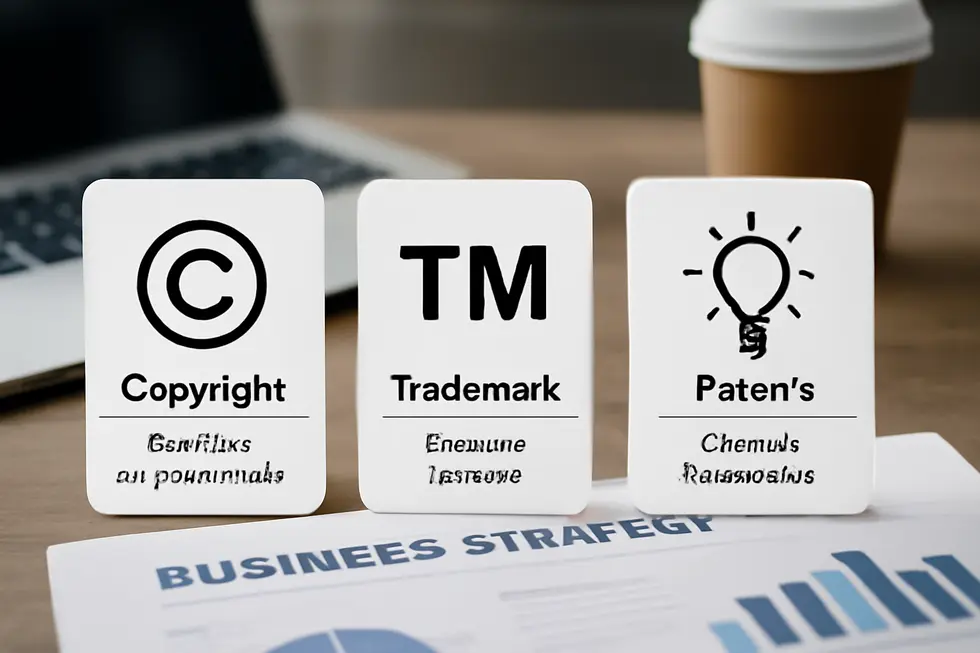
1. Understanding How Copyright, Patents, and Trademarks Protect Different Creations and Innovations
Copyright, patents, and trademarks each protect unique types of intellectual property. Copyright safeguards original creative expressions fixed in a tangible form, like literature, music, and art, focusing on the expression of ideas rather than the ideas themselves. Patents protect novel inventions and technological advancements, granting exclusive rights to their use and manufacture for about 20 years. Trademarks cover brand identifiers—such as names, logos, and slogans—that distinguish goods or services, with protections lasting indefinitely through renewal and continued use. These distinctions clarify how creators, inventors, and businesses can strategically secure legal rights over creative works, functional innovations, or commercial branding. For deeper insights, see trademark protection business name logo and explore the fundamentals of intellectual property law here.
2. Contrasting Copyright, Patent, and Trademark Protections: Durations and Registration Essentials
Distinct Durations and Registration Practices of Intellectual Property Rights
Copyright protection automatically applies once an original work is fixed in a tangible form, lasting for the author’s life plus 70 years. Registration is optional but beneficial for legal enforcement. In contrast, patents demand a formal application, detailed disclosure, and examination, granting exclusive rights for typically 20 years from filing. Trademarks protect brand identifiers indefinitely, provided they are actively used and periodically renewed; registration, while not always mandatory, secures crucial legal advantages. These varied durations and registration requirements reveal the differing goals of these protections—copyright fosters long-term creative expression, patents encourage timed innovation disclosure, and trademarks maintain enduring brand identity. This framework balances creator rights with public interest over time.
For more about how copyright enters the public domain, see copyright law and public domain.
3. Economic Impact and Market Functions: How Copyright Stands Apart from Patents, Trademarks, and Trade Secrets
Economic Impact and Market Functions: How Copyright Stands Apart from Patents, Trademarks, and Trade Secrets
Copyright protects original creative works like books, music, and software automatically once they are fixed in a tangible form. This protection incentivizes cultural creation by granting creators exclusive rights for life plus 70 years, enabling monetization through reproduction, distribution, and derivative works. In contrast, patents safeguard technological inventions via formal application, lasting about 20 years, encouraging R&D investment. Trademarks focus on branding, protecting logos or slogans indefinitely when actively maintained, while trade secrets shield confidential business information as long as secrecy persists. These differences reflect each IP type’s unique market role: copyright fuels the creative economy, patents promote innovation, trademarks build consumer trust, and trade secrets maintain business advantages. For a detailed view on copyright’s economic role, see copyright definition economics business.
External reference: WIPO Intellectual Property Handbook (https://www.wipo.int/about-ip/en/)
4. Creative Expression Versus Innovation: How Copyright Diverges from Patents and Trademarks
Copyright uniquely safeguards original creative expressions fixed in tangible form, such as literature, music, and art, granting authors exclusive rights to reproduce and adapt their works. Unlike patents, which protect functional inventions and require novelty and utility, copyright does not cover ideas, processes, or technological innovations. Similarly, trademarks defend brand identifiers like logos or slogans that distinguish commercial goods. Copyright protection arises automatically upon fixation, unlike the application-driven patent and trademark processes. The length of protection also differs, with copyrights lasting typically the author’s life plus 70 years, while patents expire after about 20 years, and trademarks can be maintained indefinitely. This division highlights how copyright fosters creativity and artistic integrity, whereas other IP rights focus on technological and commercial interests. For a detailed overview, see LegalZoom on types of IP and copyright protection.
5. How Copyright and Other Intellectual Property Shapes Societies and Global Relations
Copyright, trademarks, patents, and trade secrets protect different creative and commercial interests. Copyright secures original artistic expressions, encouraging cultural growth by giving creators exclusive rights to reproduce, distribute, and adapt their works. Trademarks build brand trust by protecting identifiers that distinguish goods or services, preventing consumer confusion. Patents fuel technological innovation by granting inventors exclusive rights to new inventions but can also limit access through monopolies. Trade secrets safeguard confidential business information, preserving competitive advantage. Societally, these protections balance innovation, consumer confidence, and market competition. Geopolitically, IP laws affect international trade, with developed countries often enforcing stronger protections, influencing global technology flow and economic power. Rapid advances in digital and AI technologies demand ongoing adaptation of IP regimes to these complex challenges.
For more insights on how copyright fits into business contexts, see copyright definition for business owners.
(Source: General copyright and IP law references)
Chapter 5: Essential Facts About Copyright Creators’ Rights and Limitations
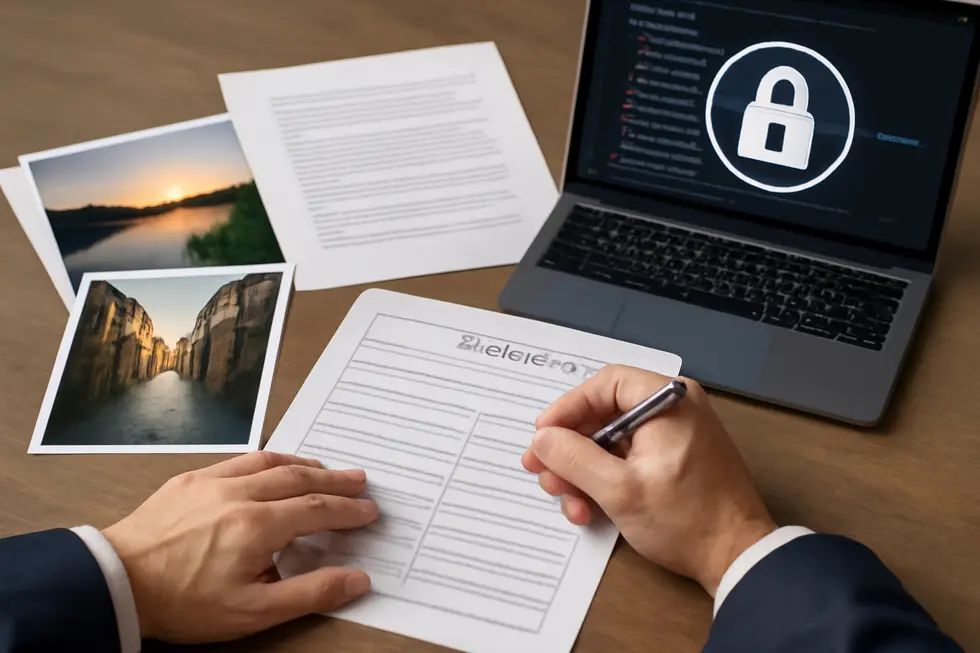
1. How Automatic Copyright Grants Creators Control and Economic Benefits
Copyright protection is automatic once an original work is fixed in a tangible form, instantly granting creators exclusive economic rights. These rights include reproducing, distributing, adapting, publicly performing, and displaying the work. Such protections empower creators to control how their works are used and monetize them effectively. While registration is not required to obtain copyright, it offers legal advantages like establishing ownership records and enabling stronger enforcement through lawsuits. Rights can also be licensed or transferred, providing flexibility. Unauthorized use constitutes infringement unless exceptions like fair use apply. This legal framework balances creators’ exclusive control with public access, incentivizing creativity and fair use. For detailed legal guidance on copyright registration and enforcement, the U.S. Copyright Office provides valuable resources [1]. For further insights on copyright’s economic implications in business, see copyright definition economics business.
2. Understanding Originality and the Boundaries of Copyright Protection
Originality is the cornerstone of copyright protection, requiring that a work be independently created with at least minimal creativity. This ensures that copyright safeguards only the unique expression of ideas, not the ideas or facts themselves. To qualify, a work must be fixed in a tangible medium—whether written, recorded, or digital—which anchors protection to a concrete form. Copyright grants creators exclusive rights including reproduction, distribution, public performance, display, and the creation of derivative works. However, underlying ideas, methods, or processes remain unprotected, preserving the balance between creativity and public access. Notably, works generated solely by artificial intelligence currently lack copyright in the U.S., emphasizing the human element essential to originality. For more on how copyright protects original expressions over facts, see copyright definition for business. For an in-depth legal perspective, refer to Stephen McJohn’s comprehensive overview.
3. Moral Rights: Protecting Creators’ Personal Connection Beyond Economic Control
Moral rights safeguard a creator’s personal and reputational bond to their original work. These rights include the right of attribution, ensuring creators receive proper credit or can disassociate their name if alterations harm their reputation, and the right of integrity, allowing objection to distortions or mutilations that prejudice their honor. Unlike economic rights, which cover financial control such as reproduction and distribution, moral rights are generally non-transferable but may be waived through contracts. Originating from the Berne Convention (Article 6bis), moral rights enjoy varied global enforcement, with stronger protections in jurisdictions like India, where courts have defended authors’ reputational interests even post copyright transfer. This distinction between moral and economic rights highlights the balance copyright law strikes between creator recognition and commercial use. For more on creators’ rights, see the York University copyright guide.
4. Balancing Creators’ Rights with Fair Use: Navigating Copyright Exceptions
Fair use plays a crucial role in balancing copyright holders’ exclusive rights with the public’s interest in accessing and using creative works. Codified in Section 107 of the U.S. Copyright Act, it allows limited use of copyrighted material without permission for purposes like criticism, teaching, news reporting, and research. Courts evaluate fair use by weighing four factors: the purpose and character of use, the nature of the copyrighted work, the amount used, and the effect on the work’s market value. This flexible test ensures fair use adapts case-by-case, promoting creativity and knowledge sharing. Alongside fair use, other exceptions like the First Sale Doctrine and accommodations for libraries support both creators and public access. For more insights, explore copyright distribution rights for businesses. External resource: U.S. Copyright Office Fair Use.
5. Balancing Creator Control and Public Access: Copyright Duration and Legal Boundaries
Copyright protection extends for the lifespan of the author plus 70 years in many countries, or up to 95 to 120 years for corporate or anonymous works in the U.S. This limited duration grants creators exclusive rights to use, reproduce, and adapt their works, fostering innovation while eventually returning creations to the public domain. However, copyright does not shield ideas or facts themselves, only their unique expression. Legal exceptions like fair use support education and research, and works created solely by artificial intelligence lack protection due to the human authorship requirement. This framework carefully balances creators’ economic interests with society’s right to access knowledge, encouraging both creativity and cultural enrichment. For deeper insight, explore copyright and the public domain and official guidance from the U.S. Copyright Office.
Final thoughts
Understanding key facts about copyright empowers business owners to safeguard creative works that fuel growth and competitive advantage. Recognizing what qualifies for protection and the exclusive rights granted to creators helps prevent costly infringements and legal disputes. Additionally, knowing how copyright differs from other intellectual property rights sharpens business strategies around branding and innovation assets. Despite enforcement challenges, staying informed about creators’ rights and limitations ensures your business can maximize the value of its original content within the legal framework. Ultimately, a grounded approach to copyright protection secures your business’s creative foundation and fosters long-term sustainability.
Your IP is the foundation of your success – let’s protect it together before it’s too late. We can’t wait to help you turn your ideas into legally secured assets.
About us
undefined
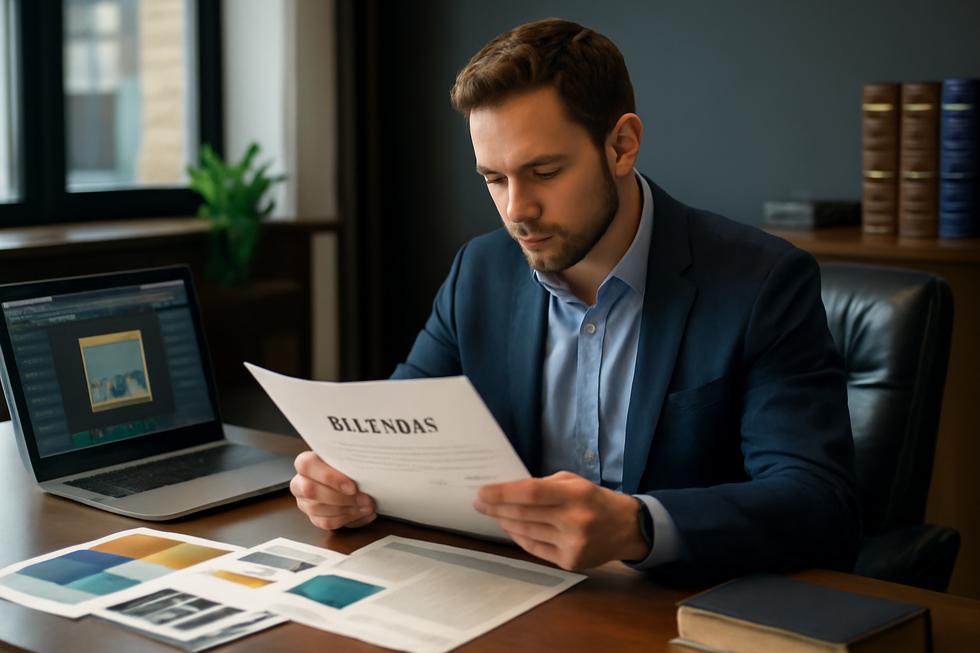


I don’t think the title of your article matches the content lol. Just kidding, mainly because I had some doubts after reading the article. https://accounts.binance.com/hu/register?ref=IQY5TET4